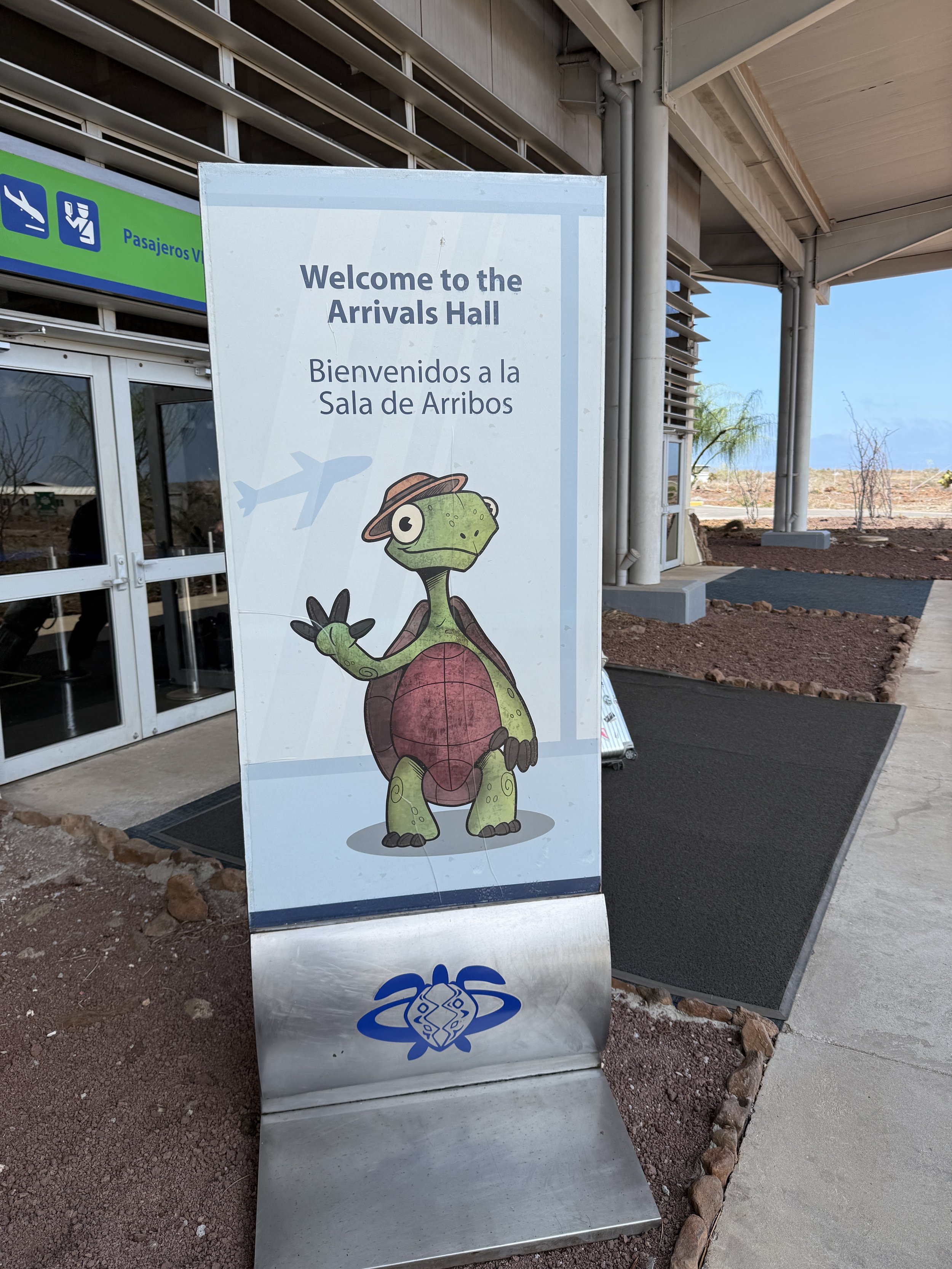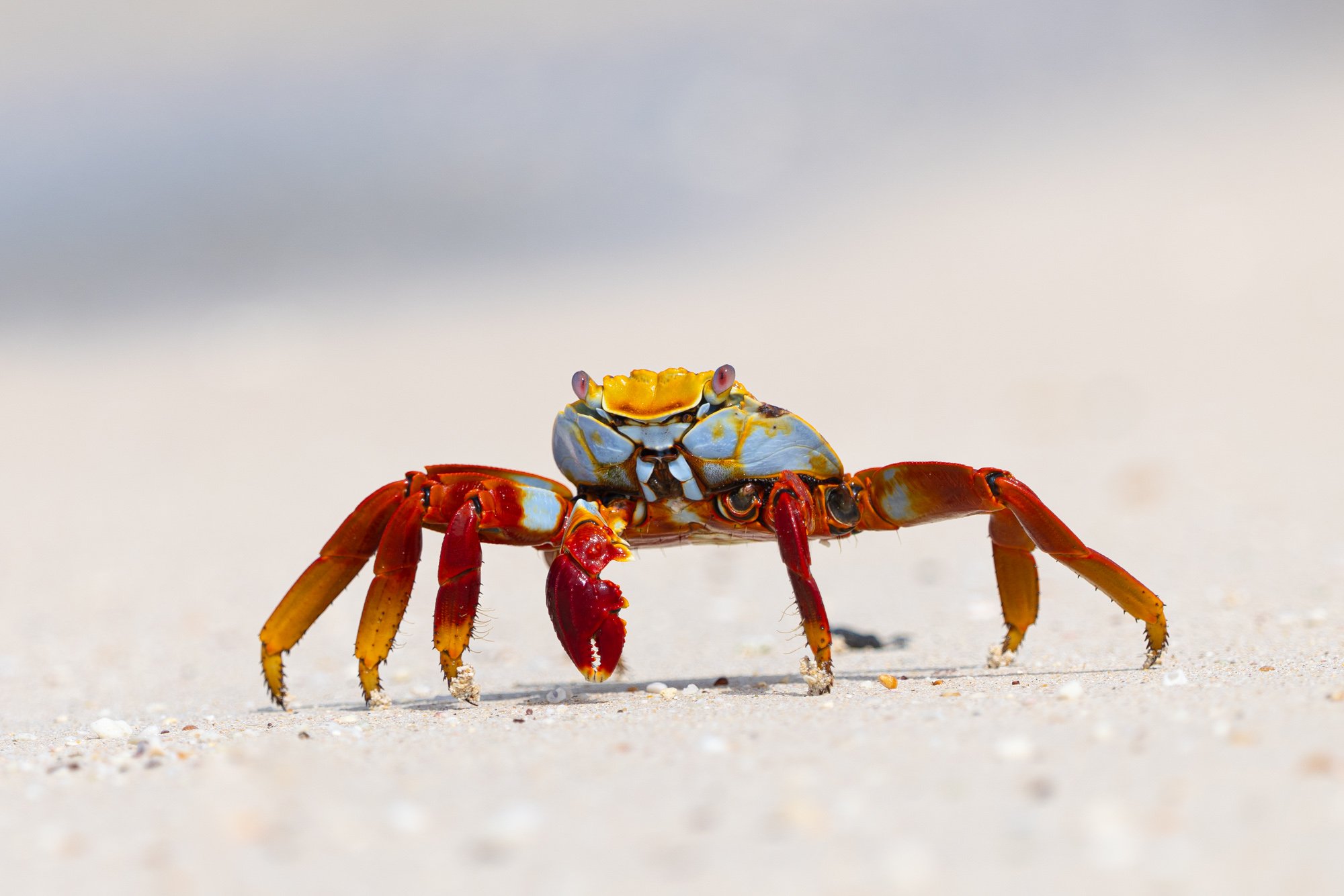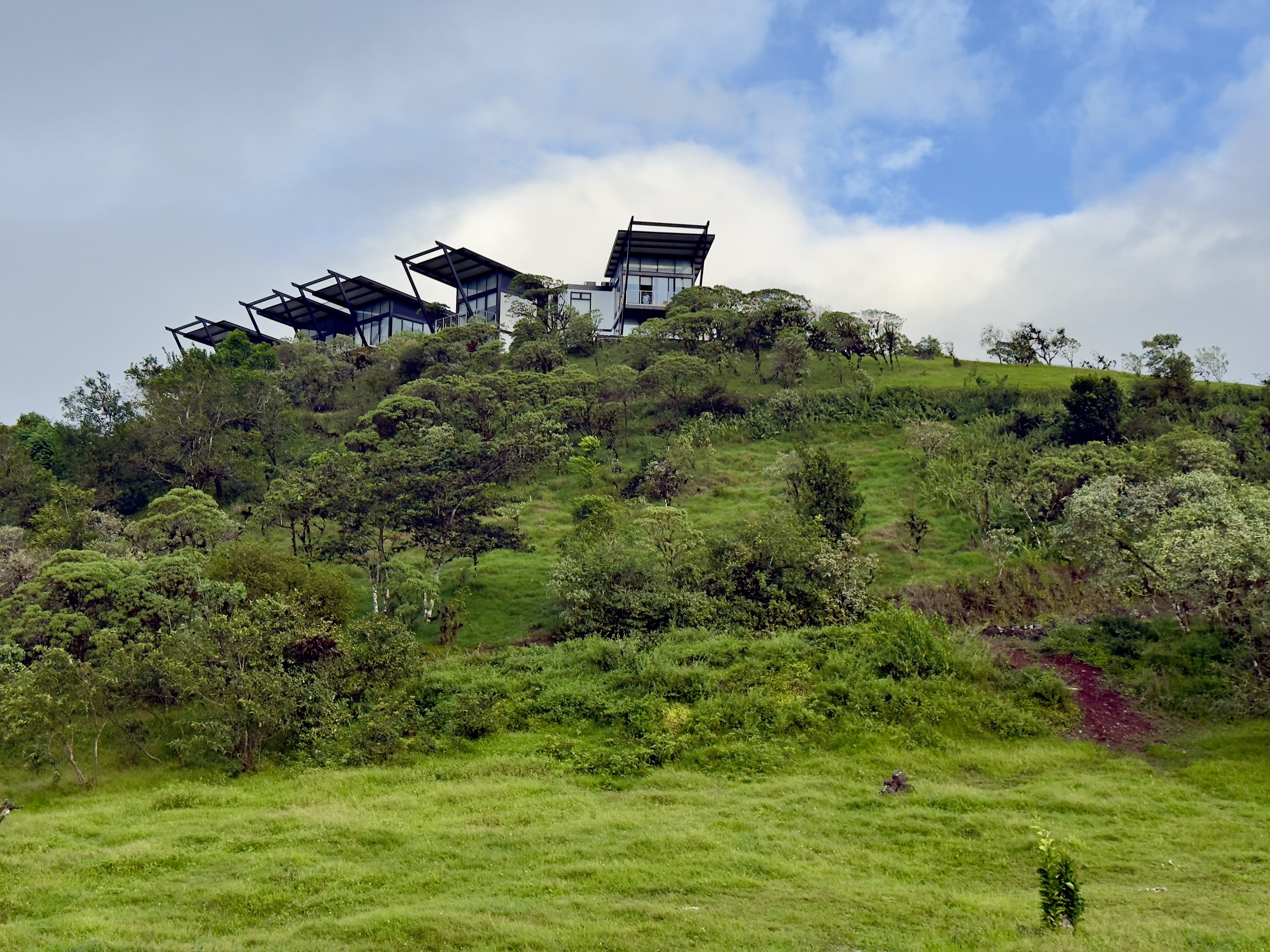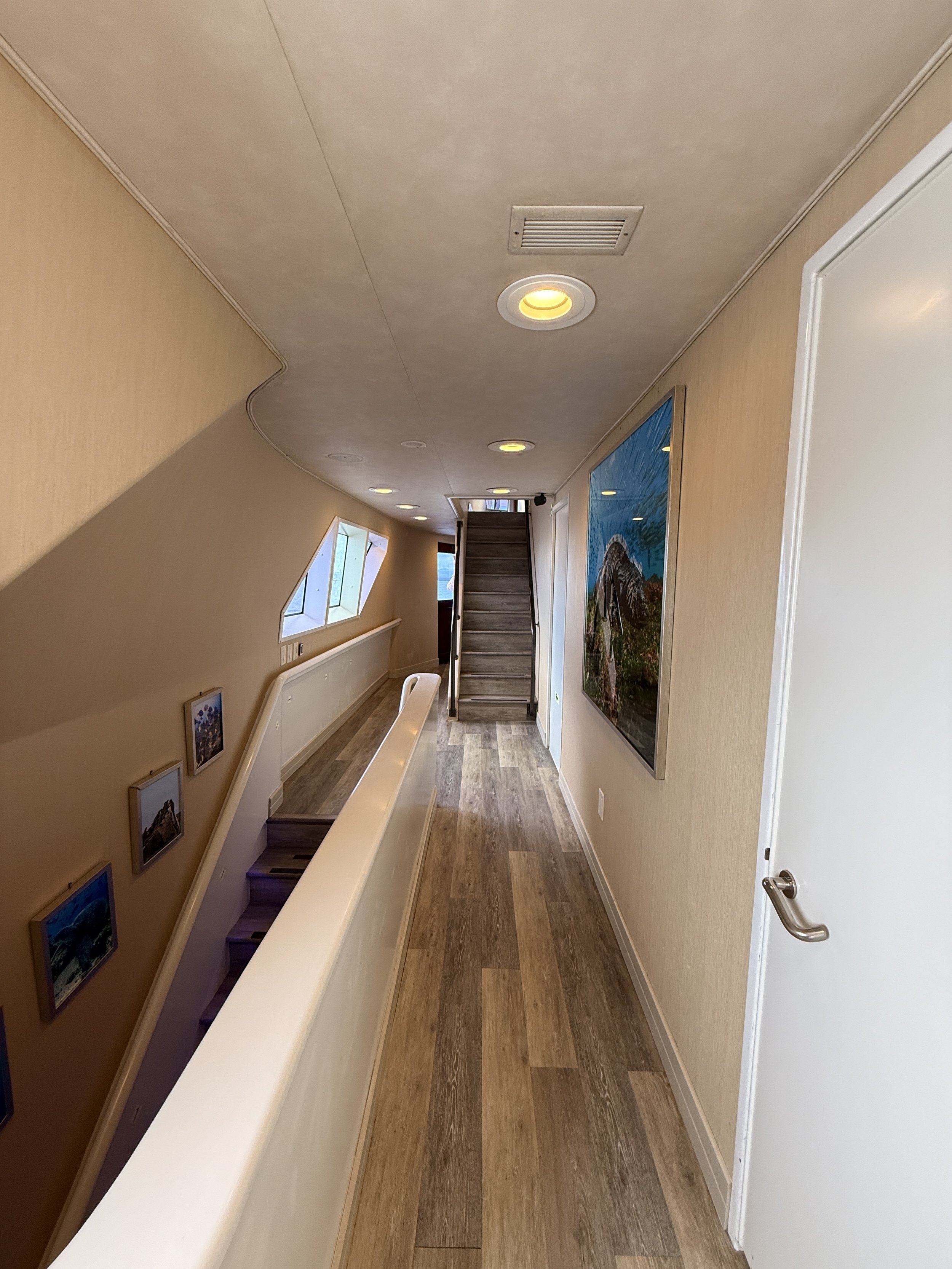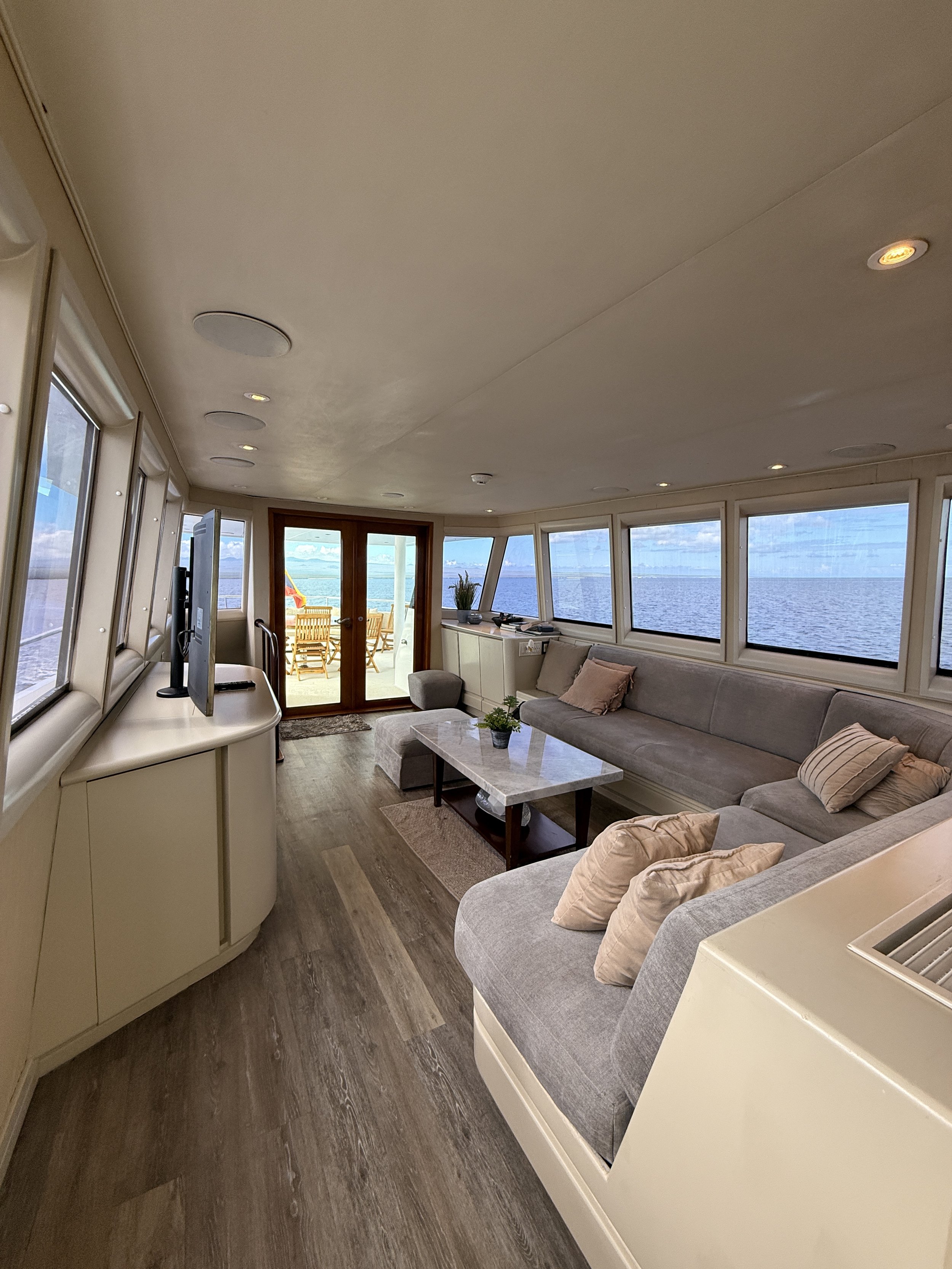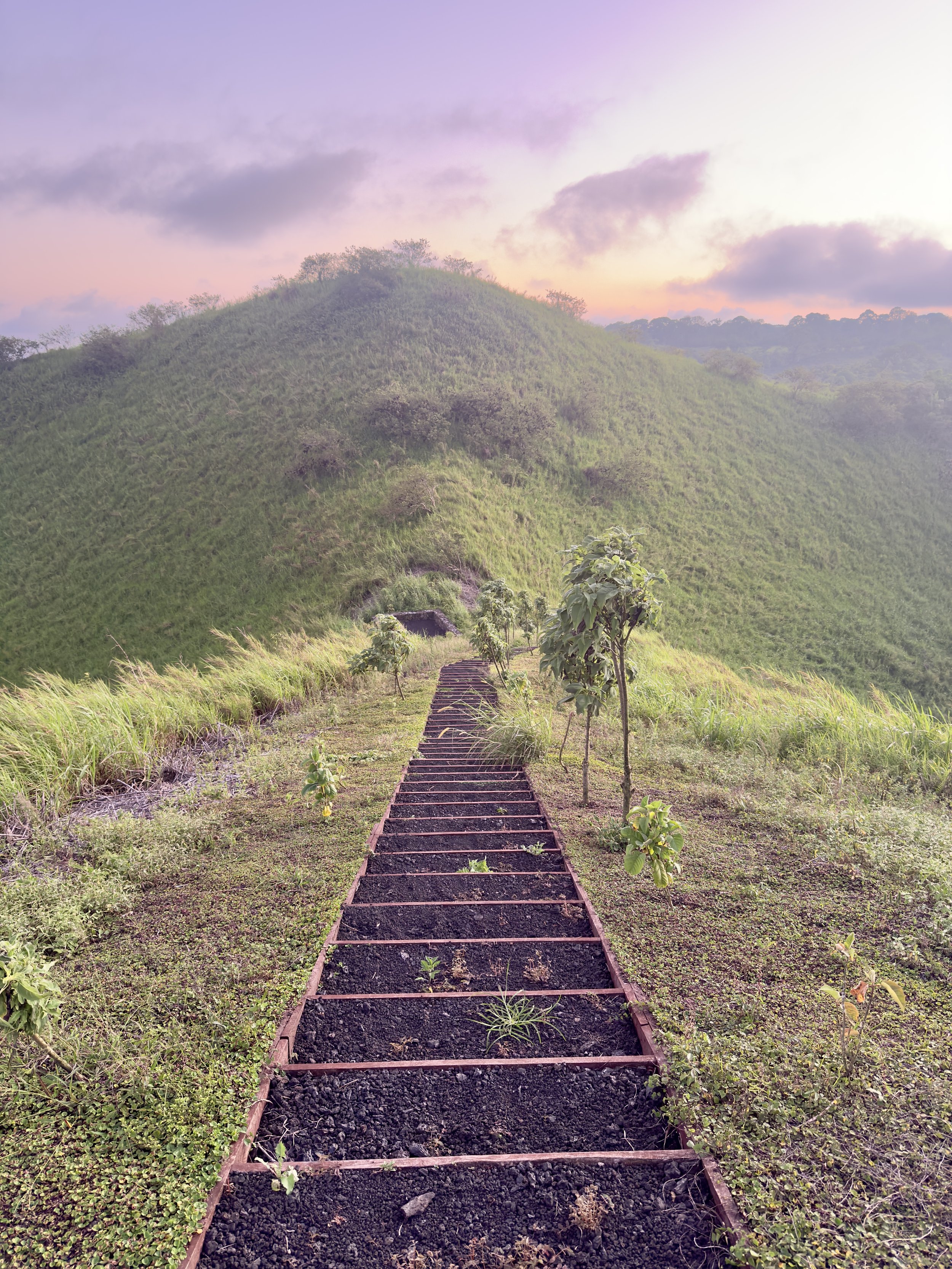My Photography & Travel Guide to the Galapagos Islands (Ecuador)
Updated March 2025
The Galapagos Islands are a bucket-list travel destination for most photographers and travelers. We were lucky enough to visit in December 2015, and we visited again in February 2025. If you love nature and wildlife, you have probably watched numerous nature series narrated by Sir David Attenborough on the Galapagos Islands. Needless to say, I am completely fascinated by the Galapagos Islands. If you ever have the chance to visit, I cannot recommend it high enough.
The Galápagos Islands have long captivated the hearts of explorers, scientists, and photographers alike. For photographers, it is a dream destination. You will see a huge variety of wildlife (including Giant Galapagos Tortoises, Bobbies, Penguins, Waved Albatrosses, frigate birds, and so much more.
Bartolomé Island
In 1835, Charles Darwin's observations of unique species led to his groundbreaking work, "On the Origin of Species," forever altering our understanding of natural selection. This archipelago continues to mesmerize visitors with its unparalleled biodiversity and pristine landscapes.
Why the Galápagos Islands Are So Special
Located approximately 1,000 kilometers (600 miles) off the coast of Ecuador, the Galápagos Islands consist of 13 major islands and numerous smaller islets. This remote location has allowed for the evolution of species found nowhere else on Earth. An astounding 80% of land birds, 97% of reptiles and land mammals, and over 30% of plants are endemic to the islands. The fearless nature of the wildlife, unaccustomed to human predators, offers photographers and nature enthusiasts intimate encounters that are truly unique.
A Blue-Footed Booby
Getting to the Galápagos Islands
It is much easier to reach the Galapagos Islands than you might think. However, it does require some planning. Here's a step-by-step guide to help you navigate the process:
Recommended Duration and Best Time to Visit
There is no “wrong” time to visit the Galapagos: different times of the year have different things to see and do. The birds, tortoises, and marine life are always there, waiting for you to take their photos.
Its geographical location, right on the equator, makes the temperature variation minimum throughout the year.
A stay of 7 to 10 days allows ample time to immerse yourself in the islands' wonders without feeling rushed. The Galápagos can be visited year-round, but each season offers distinct experiences:
Warm Season (December to May): Characterized by warmer temperatures and occasional rain, this period is ideal for snorkeling and diving, with calmer seas and excellent underwater visibility.
Sea turtles nesting (January to March)
Waved albatrosses arriving on Española Island (April)
Blue-footed boobies mating dances
Cool Season (June to November): Marked by cooler, drier weather and nutrient-rich waters, attracting diverse marine life. However, seas can be rougher, and water temperatures drop, making wetsuits advisable for aquatic activities.
Humpback whale sightings
Greater activity of Galápagos penguins
Whale shark presence near Darwin and Wolf islands
How to Get There?
Begin by booking an international flight to Ecuador, arriving at either Mariscal Sucre International Airport (UIO) in Quito or José Joaquín de Olmedo International Airport (GYE) in Guayaquil. Both cities serve as primary gateways to the Galápagos. Major airlines offer direct flights from various international destinations to these airports. An excellent transit hotel in Quito is the Wyndham Quito Airport.
From Quito or Guayaquil, you'll need to book a domestic flight to the Galápagos Islands. Flights depart multiple times daily from both cities, with Guayaquil offering slightly shorter flight times. The two main airports in the Galápagos are:
Seymour Airport (GPS) on Baltra Island: This airport is commonly used by travelers heading to Santa Cruz Island.
San Cristóbal Airport (SCY) on San Cristóbal Island: Ideal for those starting their journey on this island.
Domestic airlines such as LATAM and Avianca operate these routes.
Visa Requirements
For most travelers, including U.S. citizens, entering Ecuador (which includes the Galápagos Islands) for tourism purposes is straightforward:
Passport Validity: Your passport should be valid for at least six months beyond your intended date of departure from Ecuador.
Visa: Tourists can stay in Ecuador without a visa for up to 90 days within any 12-month period. If you plan to stay longer, you must apply for an extension before the initial 90-day period ends to avoid fines or future entry restrictions.
Entrance Fees for the galapagos
Visiting the Galápagos Islands involves several mandatory fees that contribute to the conservation and management of this unique ecosystem. Here's a breakdown of the key charges:
Galápagos National Park Entrance Fee: As of August 1, 2024, the entrance fees are structured as follows:
International Visitors:
Adults (over 12 years old): $200
Children (12 years old and under): $100
Visitors from the Andean Community (CAN) and MERCOSUR Countries:
Adults: $100
Children: $50
Ecuadorian Nationals and Foreign Residents in Ecuador:
Adults: $30
Children: $15
This fee is payable upon arrival in the Galápagos and must be paid in cash. Credit cards and traveler's checks are generally not accepted for these fees. Therefore, ensure you have sufficient cash on hand before departing for the Galápagos. The funds are allocated to various local entities to support conservation efforts and community development within the archipelago.
Transit Control Card (TCT)
All visitors are required to obtain a Transit Control Card, which costs $20. This card is issued by the Galápagos Immigration authorities and is used to monitor the flow of tourists to the islands, aiding in the preservation of the delicate ecosystem. The TCT fee is typically paid at the airport before departing to the Galápagos.
Staying on a Ship vs. Santa Cruz Island
When planning a visit, one crucial decision is whether to explore the islands aboard a ship or to base yourself on land, particularly on Santa Cruz Island.
Photo Credit to my friend Andy Stahly
Pros of Staying on a Ship:
Comprehensive Access: Ships can navigate to multiple islands, providing a broader range of wildlife and landscapes.
All-Inclusive Experience: Accommodations, meals, and guided excursions are typically bundled, simplifying logistics.
Cons of Staying on a Ship:
Limited Flexibility: Itineraries are fixed, leaving little room for spontaneous exploration.
Motion Sickness: The constant movement can be challenging for those prone to seasickness.
THE Pikaia Lodge
During our recent visit in February 2025, we chose to stay at Pikaia Lodge, nestled in the highlands of Santa Cruz Island.
Sunrise at the Pikaia
This eco-friendly hotel is one of our favorite hotels in the world. Everything was incredible, from the food to the staff to the rooms and views. Our naturalist guide. Mario exceeded all our expectations. However, everyone from the cleaners to the bus drivers to the staff on the yacht are so kind and friendly.
Sunrise from our Room
Perched on the edge of an extinct volcanic crater, the lodge provides panoramic views of the Galápagos landscape. There is also a wonderful footpath around the property where you will enjoy the landscape, tortoises, and so many different types of birds.
Views of the Hotel
The hotel's location provides breathtaking views. While we went to the Galapagos Islands to see the landscapes and wildlife we were very happy relaxing at the hotel.
The Pikaia Cuisine
All of our meals at the Pikaia were exceptional, and even the food we enjoyed on the Yacht greatly exceeded our expectations.
Private Yacht: M/Y Vision Pikaia
However, what sets the Pikaia Lodge apart is its 145-foot private yacht. The yacht is simply phenomenal. It is much more luxurious than the one they had back in 2015 during our previous visit. We enjoyed exceptional food and service, all on a very luxurious yacht. The Yacht is used to visit the nearby islands. Our guide, Mario, took excellent care of us during the land and marine day excursions.
After hiking and snorkeling, having a private cabin to rest, change our wet clothes, or freshen up between excursions was so nice. The last thing I would say about the Pikaia is that the staff are truly out of this world. I had forgotten the SD card for my Go-Pro camera at home. Somehow, the next morning, they were able to get me one. Just incredible!
Relaxing by the Pool with Incredible Views
Photography Gear
I have listed my recommendations on photography gear below. After several trips, I would bring less gear than you might think.
Camera
If you have two cameras, I would bring them with you. This is the trip of a lifetime, and you want a backup camera. That being said, I would leave one camera on the ship and only walk around the island with one body. If something happens to the first camera, you will have the second body nearby.
I brought both of my Canon R5 Mark 2s. If you have a Canon R7, Nikon Z7, Z8, Z9 or Sonys, they are all fantastic. Bring a bunch of microfiber towels to wipe off your lens if it gets wet.
You can also use your iPhone to shoot short videos and landscape shots.
Bringing a Go-Pro for Underwater Photography
The Galápagos Islands offer some of the world's most captivating underwater environments, making a GoPro an excellent addition to your photography gear. I would definitely bring a small underwater camera (e.g., a GoPro 12). I think GoPros are easy to use and take fantastic photos and videos. Photographing Sea Turtles, Seals, and other fish is just so much fun. .
Lenses
I would NOT bring a large lens like a 400 f2.8 or 600 f4. You will be walking around the island with a group of people who might not be photographers, so you want to be fast and mobile. Also, you are walking around the islands when there is good light.
Telephoto Zoom Lens- If you bring only one lens, bring something like a Canon RF 100-500, EF 100-400, or even a 70-200mm. The Nikon 180-600 or Sony 200-600 mm are fantastic. My friend brought the Canon RF 100-300mm and was very happy with his choice. The Canon 24-240 mm or the RF 100-400 f5.8-f8 would also be great if you want to be even lighter.
Wide-Angle LENS—You should take some landscape shots, so a 24-105mm lens would be an excellent choice for a second lens.
Extra Batteries
In the Galápagos, much of your time will be spent on remote islands and on boats. So, it can be difficult to charge your camera batteries frequently. This is why I strongly recommend bringing several backup batteries.
EXTRA SD CARDS
You are going to want to take a lot of pictures. There are so many different landscape and wildlife photography opportunities, and you won’t want to miss any of them. For this reason, you will want to have plenty of memory card space to store those images.
Camera Rain Sleeve
I strongly recommend bringing a rain sleeve for your camera. These sleeves protect your camera from rain and splashing water and will give you peace of mind when shooting in the elements. You can also use a shower cap in a pinch.
Do not BRING
A monopod/tripod
Filters
Flash
Drones are not allowed in the Galapagos
Photography on The Galapagos Islands
Landscapes
The landscapes in the Galapagos Islands are unique. There are also incredible flowers, plants, and rock formations to photograph. When Neil Armstrong visited Bartolomé Island, he said it was the closest thing to what the Moon looked like.
Bartolomé Island
The grounds of the Pikaia lodge also provide some beautiful landscapes.
The lava caves on Santa Cruz Island in the Galápagos Islands are a fascinating natural wonder formed by ancient volcanic activity. These lava tunnels, also known as lava tubes, were created when molten lava flowed beneath the surface, cooling on the outside while the hot lava inside continued moving. When the flow eventually stopped, it left behind hollow, cave-like structures that now serve as an intriguing geological attraction.
The Lava Caves on Santa Cruz Island
Tortuga Beach, located on Santa Cruz Island in the Galápagos, is often considered one of the most beautiful beaches in the world, and for good reason. It is just stunning between the pristine white sands, crystal-clear turquoise waters, and natural wildlife.
Tortuga Beach
The “Big 15” of Galápagos Wildlife
Here is the full list of the Big 15 species in the Galápagos Islands, which every wildlife enthusiast and photographer should aim to capture:
1. Galápagos Giant Tortoise – The island’s most famous resident, some of which live over 100 years. Best seen on Santa Cruz Island at the Charles Darwin Research Station or El Chato Tortoise Reserve.
2. Blue-footed Booby – The Blue-footed Booby (Sula nebouxii) is one of my favorite birds! The bright blue color comes from pigments in the bird's fish-based diet.
Males display their feet in a mating ritual by lifting them up and down in a sort of strut in front of the female. Often found on North Seymour and Española Island.
3.Red-footed Booby – The least common of the three booby species in the Galápagos, mainly seen on Genovesa Island. Of the three booby species in the Galápagos, the Red-footed Booby (Sula sula) is the smallest. We were not able to see one.
4. Nazca Booby – The largest booby species in the region, nesting on the cliffs of Española and Genovesa Islands.
5. Flightless Cormorant – An evolutionary marvel, this bird lost its ability to fly but is an exceptional diver. Best spotted on Fernandina and Isabela Islands. The Flightless Cormorant (Phalacrocorax harrisi) is an excellent example of the islands' specially adapted species; the cormorant has few predators and, over time, has lost its ability to fly. Look for these birds on Fernandina and the west coast of Isabela Island.
6. Great and Magnificent Frigatebirds – Known for the males’ impressive red throat pouch, which inflates like a balloon during mating season. Frequently seen soaring above the islands. The Galápagos are home to two frigatebird species: the Great Frigatebird (Fregata minor) and the Magnificent Frigatebird (Fregata magnificens). In both species, males display an impressive red gular sac, which they inflate to attract a mate.
7. Galápagos Hawk – The top predator in the archipelago, often spotted on Española and Fernandina Islands. The Galápagos Hawk (Buteo galapagoensis) is the largest endemic bird of prey in the islands and is closely related to North America’s Red-backed and White-tailed Hawks. They feed mainly on large insects, small lava lizards, snakes, and rodents, as well as hatchling turtles and iguanas.
8. Marine Iguana – The only sea-going lizard in the world, these prehistoric-looking reptiles can be seen sunbathing on lava rocks throughout the islands. The marine iguana (Amblyrhynchus cristatus) is the only marine lizard in the world. They can spend up to an hour in the water, where they feed on marine algae. The specimens on Española Island, in particular, are known for their bright red-and-green coloration during breeding season.
On Tortuga Beach
9. Land Iguana – Bright yellow-orange iguanas that contrast beautifully against the black volcanic terrain. Best seen on Santa Cruz, South Plaza, and Isabela Islands. The Galapagos land iguana (Conolophus subcristatus) can be found on most of the islands and is the most widely distributed of the archipelago's several terrestrial iguana species. They spend most of their time absorbing sunshine on volcanic rocks or feeding on the prickly-pear cactus, which makes up 80% of its diet.
10. Santa Fe Land Iguana – A distinct species only found on Santa Fe Island, with paler coloration than the common land iguana.
11. Galápagos Penguin – There are 17 species of penguins in the world, but the Galápagos Penguin (Spheniscus mendiculus) is the only one that lives as far north as the equator. Fewer than 2,000 individuals live in the wild; your best chances for seeing them are on Isabela and Fernandina, though they can also sometimes be observed on Santiago, Bartolomé, and Floreana.
12. Galápagos Sea Lion – Playful and curious, these sea lions make fantastic subjects for underwater photography and can be found on almost every island. The Galápagos sea lion (Zalophus wollebaeki) is prevalent throughout the islands; it's commonly seen swimming and splashing in the water or basking on shore. Long considered a subspecies of the California sea lion, it is now recognized as its own species and is the smallest of all sea lions.
13. Fur Seal – Often mistaken for sea lions, these shy creatures are smaller and prefer rocky shores for resting. Best spotted at Santiago and Genovesa Islands. Galápagos fur seals (Arctocephalus galapagoensis) are less ubiquitous than their sea lion cousins and tend to prefer rocky coastlines. Their stouter, more pointed snouts can distinguish them, their thicker coats and their more pronounced ears.
14. Waved Albatross – The largest seabird in the Galápagos, famous for its elaborate courtship dance. Española Island is the only place in the world where they breed. The Waved Albatross (Phoebastria irrorata) has the largest wingspan of any bird in the Galápagos. It is not endemic to the archipelago but is more easily seen on Española Island—where it breeds from April to December—than anywhere else. Its elaborate courtship dance includes bill circling, beak clacking, and head nodding.
15. American Flamingos - Members of the Galápagos population of the American Flamingo (Phoenicopterus ruber) are smaller than their counterparts in the Caribbean and lay smaller eggs. During their nesting period from March to July, they can be seen congregating in various lagoons, especially on Floreana and Isabela Islands.
Final Thoughts
The Galápagos Islands remain one of the most extraordinary destinations for photographers and nature lovers. Whether you’re trekking through volcanic landscapes, snorkeling alongside marine iguanas, or capturing the intimate moments of the famous Big 15, every moment on these enchanted islands is unforgettable.
If you enjoyed this Photography & Travel Guide to the Galápagos Islands, you can check out my other Photography & Travel Guides at this link.
📩 Want more travel & photography inspiration? Subscribe to my newsletter for exclusive tips, stories, and guides straight to your inbox!





